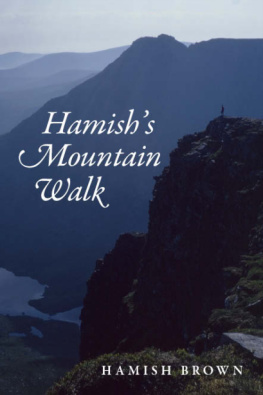About the Author
Emily Freeman Brown is director of orchestral activities, professor of conducting, and music director of opera theater at Bowling Green State University. The first woman to receive a doctor of musical arts in orchestral conducting at the Eastman School of Music, she has appeared as a frequent guest conductor with orchestras throughout the world, including Europe, North and South America, and Asia. Under her direction, the Bowling Green Philharmonia has released numerous recordings in a series titled The Voice of the Composer: New Music from Bowling Green on Albany Records and syndicated internationally on National Public Radio. Other recordings have appeared on Naxos and Opus One Records.
Brown has conducted all-state orchestras in several states, including Washington, Missouri, Minnesota, Iowa, and Ohio, and has been a clinician at the Mid-West Band and Orchestra Clinic and for the Conductors Guild, where she also served as president. In that position, she organized numerous conducting workshops across the United States. Articles have been published in the Journal of the Conductors Guild , Bach , Women of Note , and the publication of the City University of Londons International Conference on Jewish Music.
Brown has given conducting master classes in Berlin, Germany; Riga, Latvia; Cluj-Napoca, Romania; Astana and Almaty, Kazakhstan; Santiago, Chile; and at the Beijing China Central Conservatory. She served as a member of the jury for the Eduardo Mata Conducting Competition in Mexico.
A Dictionary for the Modern Conductor
DICTIONARIES FOR THE MODERN MUSICIAN
Series Editor: David Daniels
Contributions to Dictionaries for the Modern Musician offer both the novice and the advanced artist lists of key terms designed to fully cover the field of study and performance for major instruments and classes of instruments, as well as the workings of musicians in areas from conducting to composing. Focusing primarily on the knowledge required by the contemporary musical student and teacher, performer, and professional, each dictionary is a must-have for any musicians personal library!
A Dictionary for the Modern Singer by Matthew Hoch, 2014
A Dictionary for the Modern Clarinetist by Jane Ellsworth, 2014
A Dictionary for the Modern Trumpet Player by Elisa Koehler, 2015
A Dictionary for the Modern Conductor by Emily Freeman Brown, 2015
Published by Rowman & Littlefield
A wholly owned subsidiary of The Rowman & Littlefield Publishing Group, Inc.
4501 Forbes Boulevard, Suite 200, Lanham, Maryland 20706
www.rowman.com
Unit A, Whitacre Mews, 26-34 Stannary Street, London SE11 4AB
Copyright 2015 by Rowman & Littlefield
All rights reserved . No part of this book may be reproduced in any form or by any electronic or mechanical means, including information storage and retrieval systems, without written permission from the publisher, except by a reviewer who may quote passages in a review.
British Library Cataloguing in Publication Information Available
Library of Congress Cataloging-in-Publication Data
Brown, Emily Freeman.
A dictionary for the modern conductor / Emily Freeman Brown.
pages cm. (Dictionaries for the modern musician)
Includes bibliographical references.
ISBN 978-0-8108-8400-7 (cloth : alk. paper) ISBN 978-0-8108-8401-4 (ebook)
1. ConductingDictionaries. I. Title.
ML102.C64B76 2015
781.4503dc23 2015008615
 The paper used in this publication meets the minimum requirements of American National Standard for Information SciencesPermanence of Paper for Printed Library Materials, ANSI/NISO Z39.48-1992.
The paper used in this publication meets the minimum requirements of American National Standard for Information SciencesPermanence of Paper for Printed Library Materials, ANSI/NISO Z39.48-1992.
Printed in the United States of America
Preface
Why a Dictionary for the Modern Conductor ? Simply put, because the world of todays conductor has changed to such an extent that it is time for a new look, a new perspective. Gone are the days of the great maestros who ruled with an iron fist, who hired and fired of their own accord, and who garnered enormous recording contracts but didnt have to be involved in fundraising, community outreach, social media, or education. Todays conductors, like those before, must have all the same skills. But they must also have much more. This dictionary is an attempt to meet a unique need in defining the new conducting world by touching upon as many aspects as possible in a single volume.
It provides an observers perspective at a given point in history. It is a book that the reader can dip into at any point and find something interesting or look things up to get a quick definition, a short biography, or a description of a specific conducting technique. My hope is that it will be as fascinating to read as it was to write.
Acknowledgments
Many excellent and extremely intelligent people have helped me to write this book. I would like to begin by thanking Bennett Graff, who originally contacted me about the project, and Monica Savaglia and Kellie Hagan from Roman & Littlefield, who have been very generous with their time.
I am indebted to Bowling Green State University for allowing me a semesters leave to begin the research, especially Dr. Jeffrey Showell, dean of the College of Musical Arts, Dr. William Mathis, chair of performance studies, and Michelle Paul, departmental secretary. Numerous current and former conducting students helped along the way. They include, but are not limited to, Vicente Larraaga, Octavio Ms-Arocas, and Sanitago Pieros-Serrano, who helped especially with definitions of Spanish terms, and Iwona Sowinska. Other BGSU colleagues who provided invaluable assistance include music librarian Susannah Cleveland, author and musicologist Mary Natvig, hornist extraordinaire Andrew Pelletier, the beautiful oboist Nermis Mieses, intrepid violin professor Penny Thompson Kruse, incredible flutist Conor Nelson, lover of all things cello professor Alan Smith, and director of the Mid-American Center for Contemporary Music at Bowling Green State University Kurt Doles. Special thanks to Andrew Martin Smith for creating the musical examples and symbols and Derek Brennan for the drawings. Heather Strohstein and Lydia Dutciuc helped with initial editing work. Professor at the Juilliard School Samuel Zyman, Berlin Philharmonic bassist Ulrich Wolff, composer Alexander Liebermann, conductor and Laban expert Harlan Parker, conductor Stefan Sanderling, and author David Daniels all provided valuable help and insights. I would also like to thank numerous family members, friends, and colleagues who have encouraged me throughout this process. And saved for last, my gratitude to Samuel Adler: a better partner in life could not be found.
THE DICTIONARY
A
A. The pitch that is sounded for the tuning of the orchestra. Can also designate a key of a composition, as in Symphony in A.
A=440 Hz (Hertz). The standard tuning pitch for most ensembles today except in continental Europe, where that pitch can be as high as A=444 Hz. Hz stands for the measurement of the frequency of vibrations per second. This system was invented by the German physicist Heinrich Hertz (18571894).
Abbado, Claudio. (19332014.) Italian conductor who succeeded Herbert von Karajan as music director of the Berlin Philharmonic (19892002). Music director at the La Scala Milan Opera (19681986), principal conductor of the London Symphony Orchestra (19791987), principal guest conductor of the Chicago Symphony (19821986), music director of the Vienna State Opera (19861991), and founding conductor of the Lucerne Festival Orchestra (2003). His legacy is evident in his support of young musicians: he founded the European Youth Orchestra in 1978 and the Gustav Mahler Youth Orchestra in 1986. With a long list of exceptional recordings, he is known as a conductor of subtle, expressive gestures and insightful interpretations.












 The paper used in this publication meets the minimum requirements of American National Standard for Information SciencesPermanence of Paper for Printed Library Materials, ANSI/NISO Z39.48-1992.
The paper used in this publication meets the minimum requirements of American National Standard for Information SciencesPermanence of Paper for Printed Library Materials, ANSI/NISO Z39.48-1992.